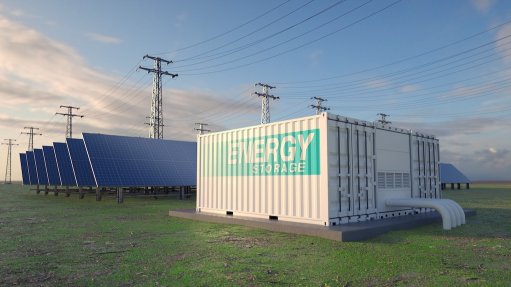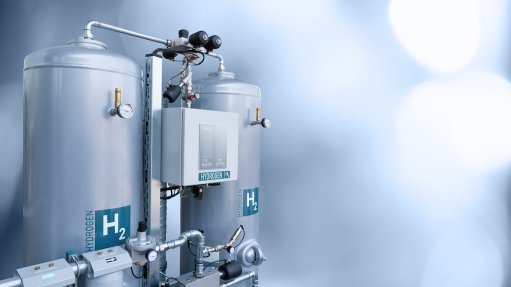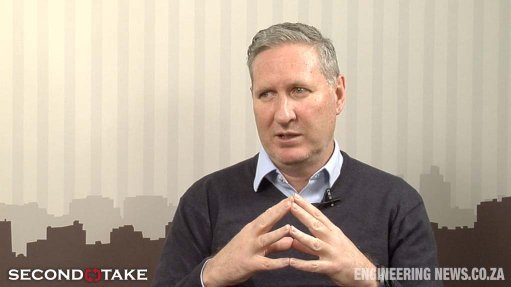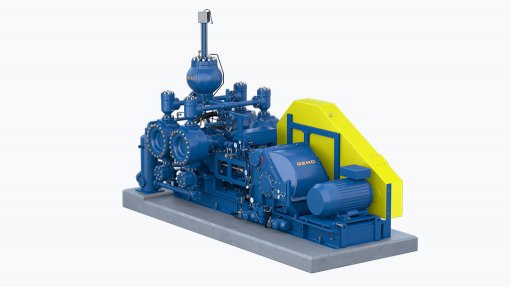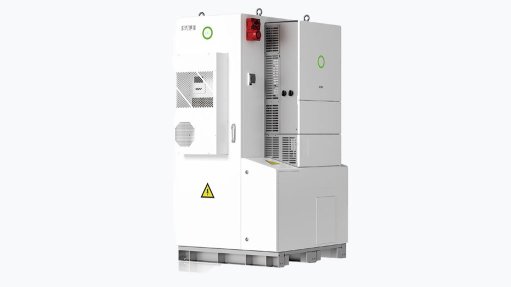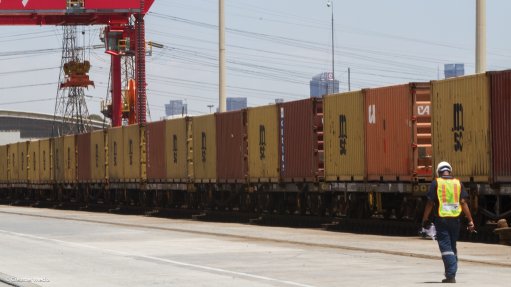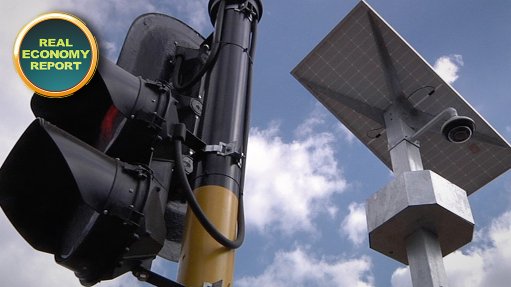DEHN Africa provides lightning and surge protection for photovoltaic (PV) systems for solar plants
This article has been supplied.
Most areas in South Africa average more than 2,500 hours of sunshine per year, and average solar-radiation levels range between 4.5 and 6.5kWh/m2 in one day. This is according to the South African government’s energy department, which notes: “The annual 24-hour global solar radiation average is about 220 W/m2 for South Africa, compared with about 150 W/m2 for parts of the USA, and about 100 W/m2 for Europe and the United Kingdom. This makes South Africa's local resource one of the highest in the world, and the country's solar-equipment industry is developing.[1]”
While we note South Africa’s positive solar radiation figures, which lend themselves so well to a developing solar industry, we must also remember that across wide stretches of our country, we have one of the highest lightning ground flash densities in the world. This therefore makes lighting protection of solar systems an imperative.
This is according to Hannes Ackermann, managing director of surge protection, lightning protection and safety equipment company, DEHN Africa, who says, “Photovoltaic (PV) systems have become a significant sector within the energy market in recent years and it is a no-brainer today that the development of affordable, inexhaustible and clean solar energy technologies will, among other benefits, allow a country to increase its energy security, reduce pollution and play an important role in controlling climate change. However, because solar plants are subject to weather influence, it’s essential to protect sensitive electronic system components from failure due to lightning flashes and surges.”
Lightning surges in the PV system can damage PV modules and inverters. Ackermann notes, “In the event of a system failure, this can obviously lead to profit losses in addition to the costs of repair or replacement. Therefore, one should aim to protect the solar plant from damage by fire, such as may be caused by a direct lightning strike, as well as protecting the electrical and electronic systems against the effects of lightning electromagnetic impulses (LEMP).”
Ackermann outlines steps that can be taken to protect the air-termination system and down conductor system; the earth termination system; the lightning equipotential bonding; the surge protection measures in the PV array; and the surge protection measures for IT systems.
Air-termination system and down conductor system
For the protection of the PV array against direct lightning strikes, it is necessary to arrange the solar modules in the protection zone of an isolated air-termination system.
- According to the class of lightning protection system, the height and the quality of the air-termination rods required is determined by means of the rolling sphere method.
- The separation distance must be kept between the PV supporting frames and the air-termination rods.
- Additionally, the operation building must be equipped with external lightning protection. Down conductors must be connected with the earth-termination system by using terminal lugs. These must be made out of corrosion- resistant material, or protected by corresponding measures (such as applying sealing tape or heat-shrinkable sleeve).
Earth-termination system
The earth-termination system of the PV system is designed as a ring earth electrode (surface earth electrode), while the earth-termination system of the operation building should be designed as a foundation earth electrode.
- The metal supporting frames, onto which the PV modules are fixed, must be connected to the earth-termination system approximately every 10 metres.
- The earth-termination system of the PV system and the earth-termination system of the operation building must be connected to each other via at least one conductor. The interconnection of the individual earth-termination systems considerably reduces the total earthing resistance, while the intermeshing of the earth-termination system creates an equipotential surface that considerably reduces the voltage load of lightning effects on the electric connecting cables between the PV array and operation building.
Lightning equipotential bonding
All conductive systems entering the operation building from outside must be generally included into the lightning equipotential bonding.
- The requirements of lightning equipotential bonding are fulfilled by the direct connection of all metal systems and by the indirect connection of all live systems via lightning current arresters.
- Lightning equipotential bonding should be performed preferably near the entrance of the structure in order to prevent partial lightning currents from entering the building.
Surge protection measures in the PV array
To reduce the load on the isolation inside the solar modules at a lightning strike into the isolated air-termination system, thermally monitored surge protective devices are installed in a generator junction box as loosely as possible to the PV generator.
- On the DC side, a surge protective device is installed in each generator junction box.
- The surge protective devices in the generator junction boxes assume the protection for the PV modules locally and ensure that no spark overs caused by conducted or field-related interferences come up at the PV modules.
Surge protection measures for IT systems
The operation building provides a remote diagnostics system, which is used for the quick and easy function check of the PV systems, permitting the operator to recognise and remedy any malfunctions at an early stage.
- The remote supervisory control system provides the performance data of the PV generator constantly in order to optimise the output of the PV system.
- Measurements of wind velocity, module temperature and ambient temperature are performed via external sensors at the PV system and can be read directly from the acquisition unit.
- The data acquisition unit provides an Ethernet interface, which a PC and/or modems are connected to for remote enquiry and maintenance. Thus, the service engineers can determine the cause of a malfunction by telediagnosis and then directly eliminate it.
- In order to provide continuous transmission of the measured data to the measuring unit, the sensor cables entering the building must be led via surge protective devices.
- Safety in the forwarding of the measured data via the telecommunication network per ISDN modem must be given as well, to provide a continuous monitoring and optimisation of the performance of the installation.
“At DEHN Africa, we believe that there are enormous possibilities in the growing implementation of renewable energy sources such as solar farms, which have the potential to change the future of the global energy industry into one that will facilitate the restoration of the planet through minimal climate change during the energy production processes. We are proud to offer our lightning protection systems and solutions for the budding renewables industry in South Africa,” concludes Ackermann.
Comments
Press Office
Announcements
What's On
Subscribe to improve your user experience...
Option 1 (equivalent of R125 a month):
Receive a weekly copy of Creamer Media's Engineering News & Mining Weekly magazine
(print copy for those in South Africa and e-magazine for those outside of South Africa)
Receive daily email newsletters
Access to full search results
Access archive of magazine back copies
Access to Projects in Progress
Access to ONE Research Report of your choice in PDF format
Option 2 (equivalent of R375 a month):
All benefits from Option 1
PLUS
Access to Creamer Media's Research Channel Africa for ALL Research Reports, in PDF format, on various industrial and mining sectors
including Electricity; Water; Energy Transition; Hydrogen; Roads, Rail and Ports; Coal; Gold; Platinum; Battery Metals; etc.
Already a subscriber?
Forgotten your password?
Receive weekly copy of Creamer Media's Engineering News & Mining Weekly magazine (print copy for those in South Africa and e-magazine for those outside of South Africa)
➕
Recieve daily email newsletters
➕
Access to full search results
➕
Access archive of magazine back copies
➕
Access to Projects in Progress
➕
Access to ONE Research Report of your choice in PDF format
RESEARCH CHANNEL AFRICA
R4500 (equivalent of R375 a month)
SUBSCRIBEAll benefits from Option 1
➕
Access to Creamer Media's Research Channel Africa for ALL Research Reports on various industrial and mining sectors, in PDF format, including on:
Electricity
➕
Water
➕
Energy Transition
➕
Hydrogen
➕
Roads, Rail and Ports
➕
Coal
➕
Gold
➕
Platinum
➕
Battery Metals
➕
etc.
Receive all benefits from Option 1 or Option 2 delivered to numerous people at your company
➕
Multiple User names and Passwords for simultaneous log-ins
➕
Intranet integration access to all in your organisation






